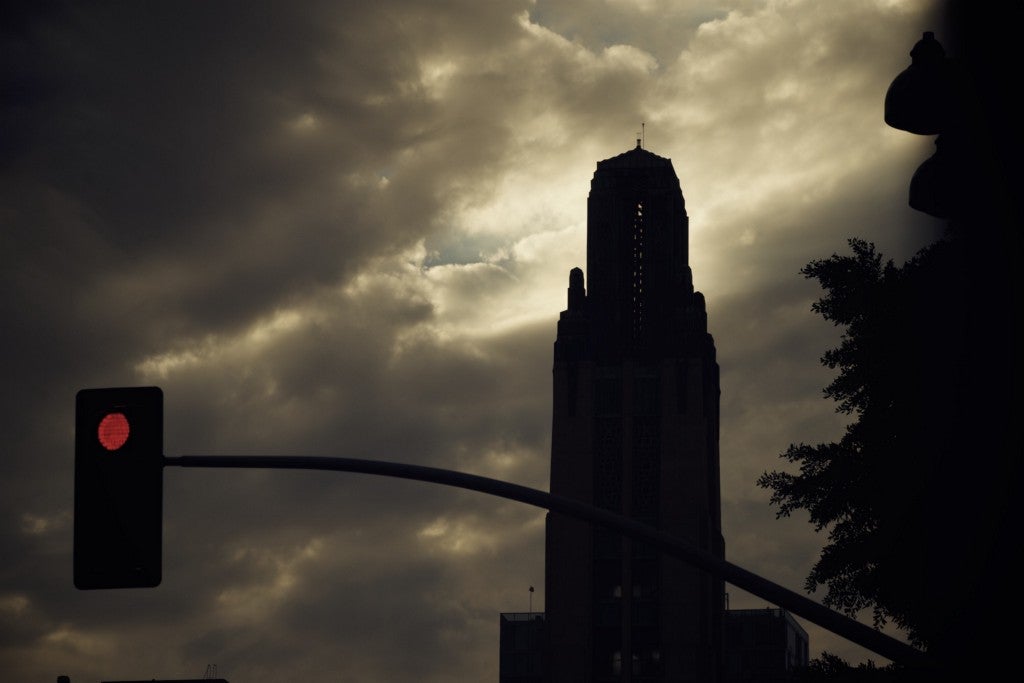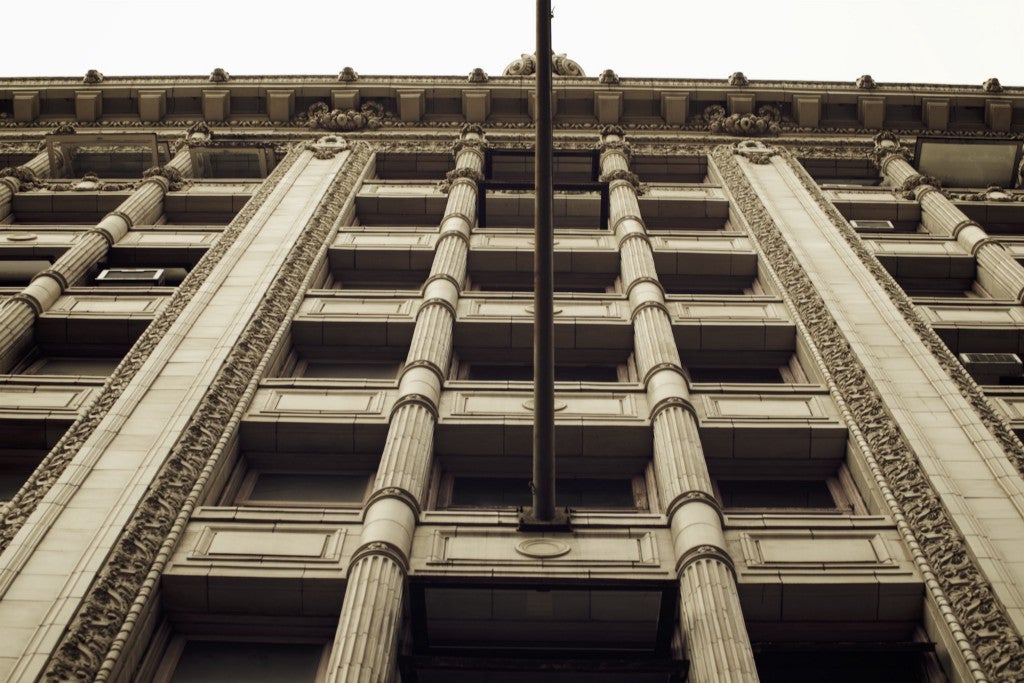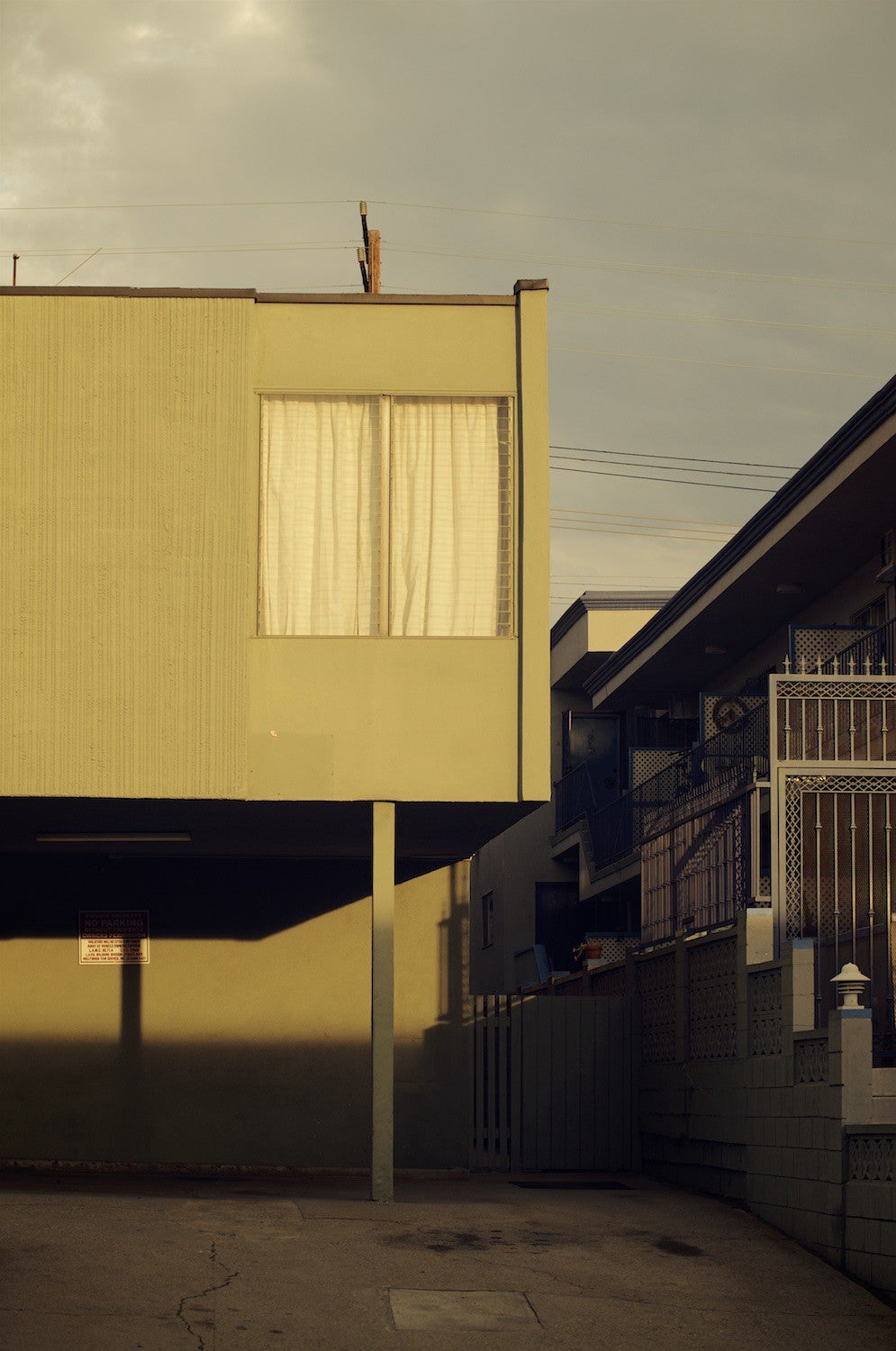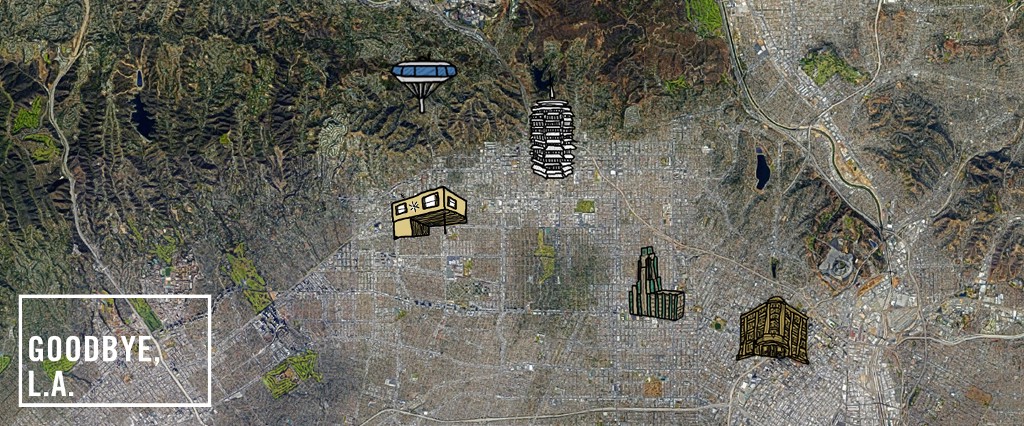MEL asked writer Ryan Bradley to tour Los Angeles, exploring what we might lose after the Big One strikes. Read the entire series here.
The days before were shaky and strange. Small quakes came in clusters, echoing out from inland along the San Andreas. Everyone was on edge. The air was too still. Dogs barked in a chorus, then at random, then another tremble from the earth, followed by so many howls, car alarms, house alarms, sirens. The Big One came early the next morning.
No one could remember the last time it happened—it had happened so long ago, back when California’s population was not quite 350,000, smaller than the whole of Bakersfield today. The quake in 1857 sent a 225-mile fissure down the spine of the state. Rivers flowed upstream, lakes sloshed and swamped their shores. Moletracks — raised lines of dirt several yards wide — spread out across Central California and into the Los Angeles basin. Cones and craters of loose earth called sand blows shot out of the ground. Big pines in the mountains shuddered hard enough to uproot and topple. Trees in the broad flat valleys sank down into liquified earth. Wells quit, new springs burbled, and a woman in an adobe home above the fault line died after the structure caved in. A man in Downtown Los Angeles collapsed stone-dead from a heart attack, perhaps from shock. The roofs and towers of several missions cracked, then crumbled. For at least a minute — and maybe as long as two — the earth shook. Even after it ended, for nearly the next four years, the state trembled from aftershocks.

This time around it was so much worse. Sure, bookshelves toppled and windows broke; refrigerators vibrated loose from their nooks and burst through kitchen walls, through yards, out onto the street. But most of us lived through the quake itself. It was after this, the next Big One, when the fires started from the burst gas lines and downed electrical lines, when we realized the water would soon be gone — those pipelines had burst too, and the aqueducts had cracked and drained — that we began to realize just how bad our situation might be. Those of us who could got in our cars and tried to drive out of town. We only made it a few blocks or maybe a few miles before realizing: There was nowhere to go. All the highways were closed; all the passes were impassable. We were stuck. We sheltered in place. Days came and went and everything got worse and worse. The rich were airlifted out via helicopter, while the rest of us were left to wander, in search of scattered relief trucks. And while wandering we stared into the wreckage, what was left of Los Angeles, wondering what we had lost.
The buildings that made it through were mostly new or middle aged, five decades or younger, they wobbled and swayed like ships at sea but did not fall. Others — older and stiffer — caved in on themselves like the old adobe more than a century ago. Some were old adobe. But most of the buildings that fell were brick, from the late 19th century and early 20th, and concrete, from the teens up through the 1970s, and so much of the soft shelled boxy residential that boomed after World War II. Everything non-ductile, unreinforced, too brittle to bend and shake without flying apart in chunks as if from a shockwave after an explosion, which is a lot like what an earthquake is, just miles below ground.
The idea that the old buildings had been fine and would continue to be fine because they’d survived quakes before proved all wrong. The last two major quakes — in Northridge in 1994 and Sylmar in 1971 — were both in the San Fernando Valley, across an entire mountain range from the more densely populated L.A. Basin, where buildings are taller and hadn’t experienced a large shock up close in more than a century.
Still, the city had seen this coming for decades, knew such a quake was all but inevitable, had even passed the most stringent quake requirements in the country for its buildings a few years before, in 2015, after so many reports on the thousands and thousands of structures in critical need of repair, to prepare. But the flip side of preparation was complacency: We knew this was coming, we knew what to do, but we had time, so we put it off. In our defense, we’d been given long deadlines. For wood beamed apartments, seven years to retrofit and make quake ready; for concrete structures, the city granted owners 25 years. Fixing the wood structures would cost up to $130,000 per building; the concrete ones cost at least that much simply for an initial assessment, and after that, often a million dollars more.


There was also the problem of early warnings. The San Andreas is one of the most closely monitored fault lines in the world and an early warning system had been put into place throughout the Southland, not too long before the Big One. Long enough for swarms of small tremors out by the Salton Sea to cause high alerts that came to nothing often enough that the warnings became too easy to ignore.
And there are fault lines all over. WAs Jonathan P. Stewart, chairman of UCLA’s department of civil and environmental engineering, put it: If the large earthquakes had been along the faults running under Hollywood, or Santa Monica, or Inglewood, and the buildings had been fine, we could now say those buildings are fine. But that’s simply not the case. A few years ago Stewart, along with Jack Moehle, a professor of engineering at UC-Berkeley, researched and put together a list of older, nonductile buildings (mostly concrete) that might collapse during a major earthquake. They came up with thousands. Among the most at risk, some of the softest-story and most cheaply constructed, ready to collapse in on their parking spaces below, were the dingbats. But so was practically everything else: the glorious old department stores, the Downtown theaters, the midcentury diners and hillside homes.
Thomas H. Heaton, the director of the Earthquake Engineering Research Laboratory at CalTech, said that even perfect, award-winning construction, where the foundations separated from the support posts and beams and absorb the bulk of the shock, could not withstand his modeling systems, based on what happened to city buildings during previous California quakes. Even steel frame with brittle welds posed a greatly increased risk. And so, in our wanderings, while stranded Angelenos began to take stock of the damage we noticed a void, something strange and essential about the city gone forever. An eclectic chaos scrubbed out.
